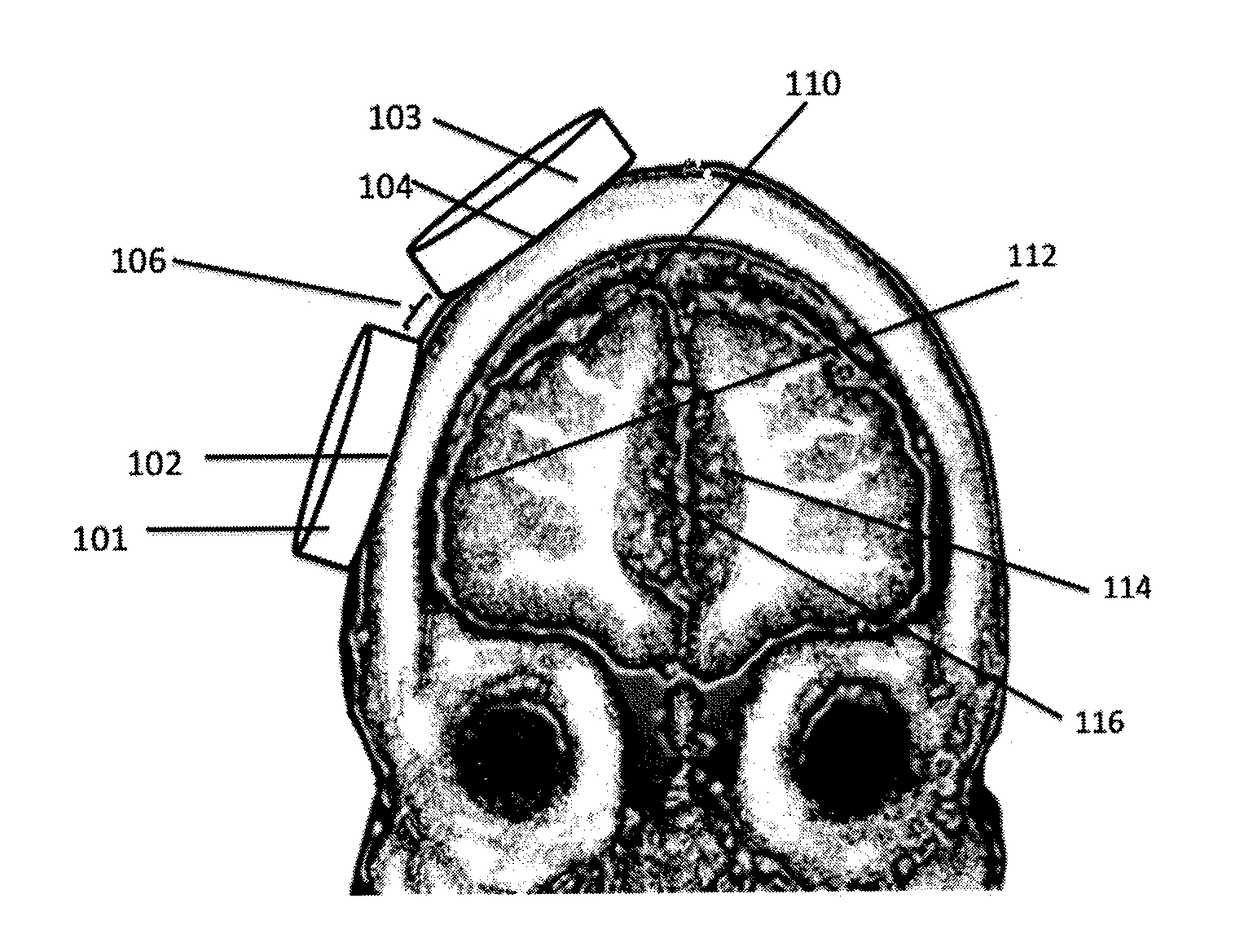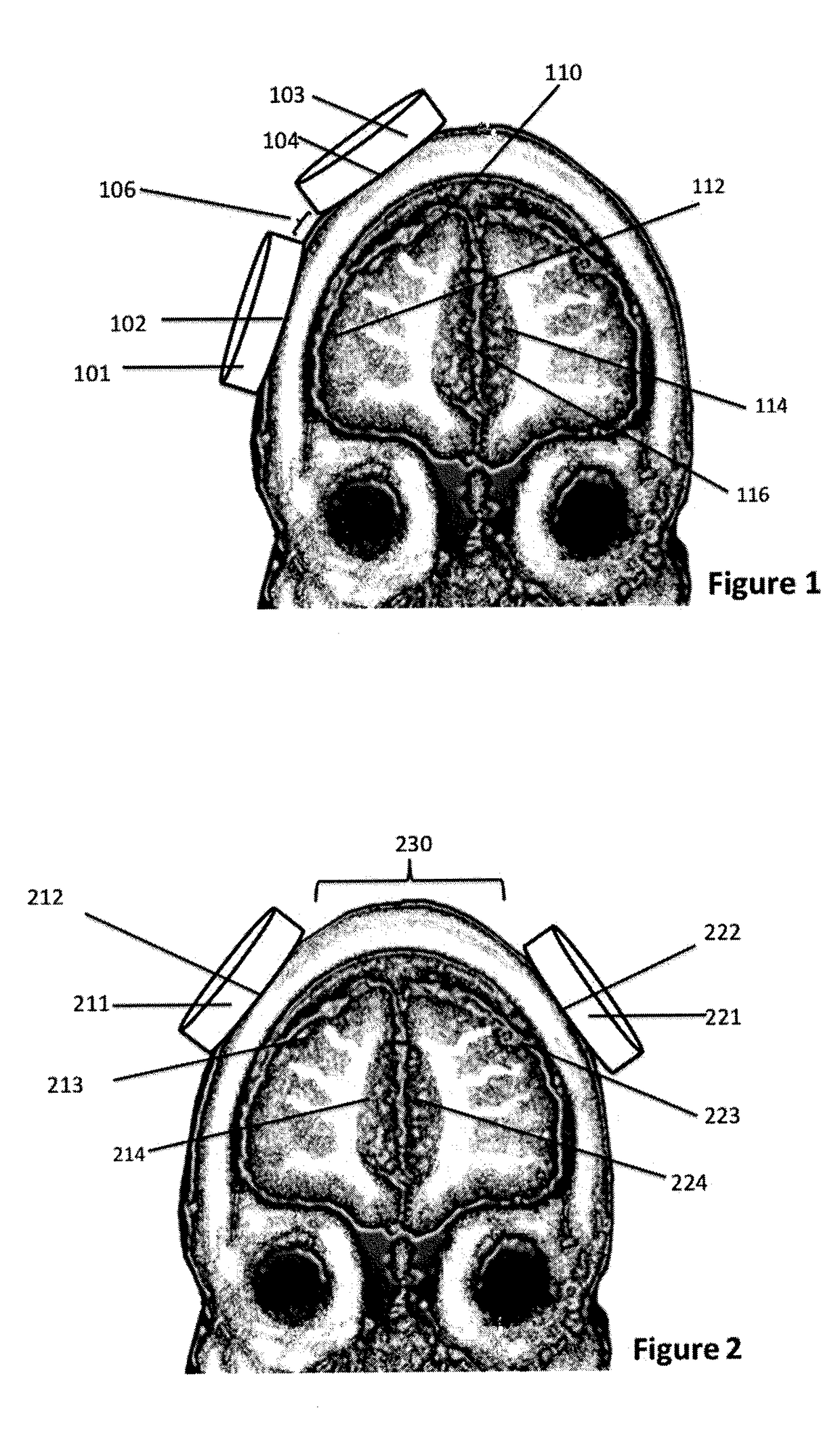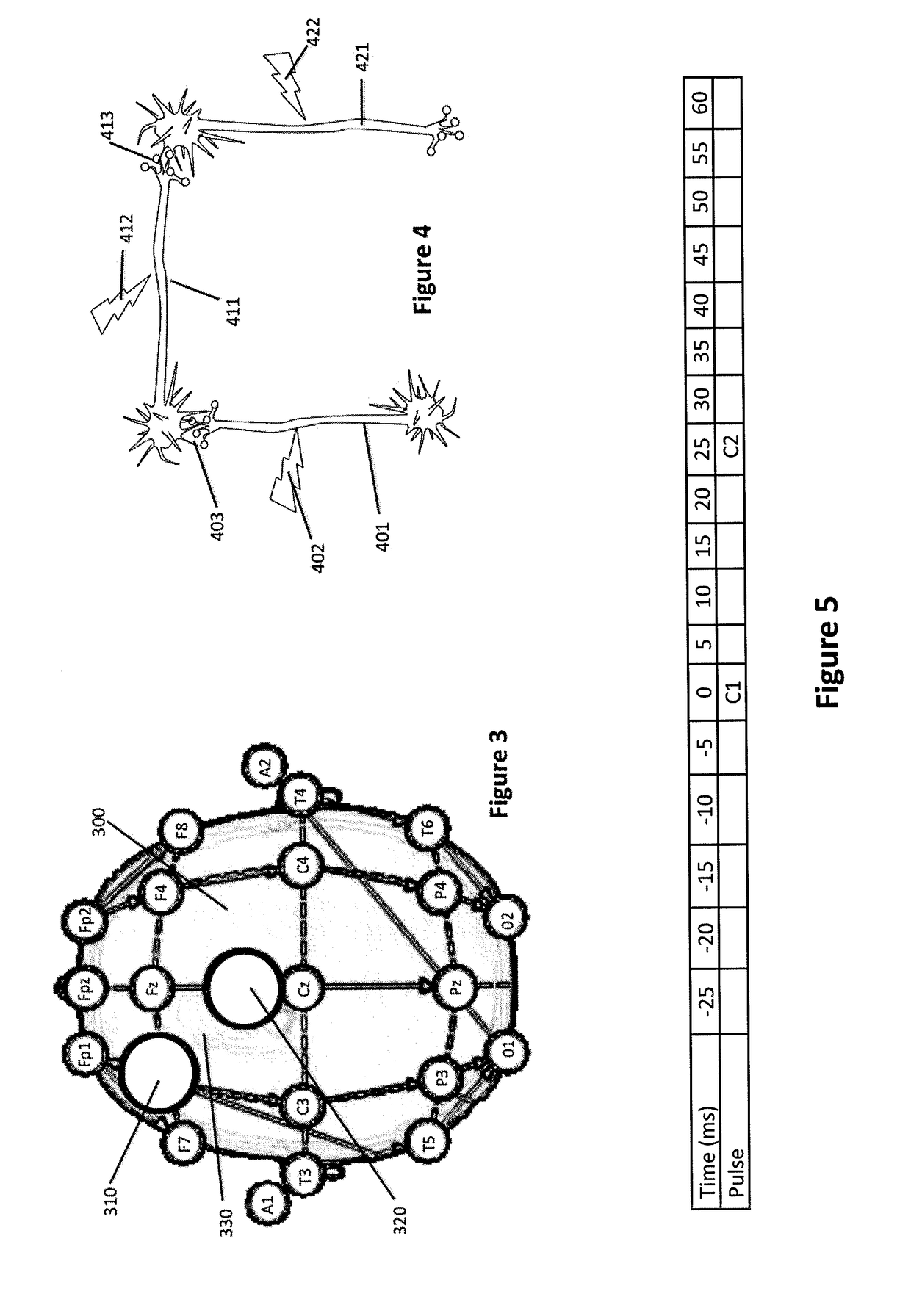Control of spike-timing dependent brain network plasticity via multi-coil transcranial magnetic stimulation
a transcranial magnetic stimulation and brain network technology, applied in magnetotherapy, magnetotherapy using coils/electromagnets, magnetotherapy, etc., can solve problems such as invasive and damaging techniques
- Summary
- Abstract
- Description
- Claims
- Application Information
AI Technical Summary
Benefits of technology
Problems solved by technology
Method used
Image
Examples
Embodiment Construction
[0030]FIG. 1 shows and embodiment in which Coil A 101 and Coil B 103 are located over separate regions of the frontal lobe, e.g., dorsomedial prefrontal cortex (dmPFC)110 and dorsolateral prefrontal cortex (DLPFC) 112, respectively, with space 106 separating the stimulating coils. The 3rd regions right anterior cingulate cortex (ACC) 114 and left anterior cingulate 116 are thereby modulated via internal network connectivity. The optimal time between pulses to the two coils is generally in the range 5 to 40 ms either before or after stimulation to the reference neuron. A region of the scalp 102 is interposed between coil A 101 and the dorsolateral prefrontal cortex surface 112, and a second region of the scalp 104 is interposed between the dorsomedial prefrontal cortex 110 and coil B 103. A space 106 separates the stimulating coils 101 and 103.
[0031]FIG. 2 shows an alternative arrangement of coils in which Coil A 211 and Coil B 221 are over opposite brain hemispheres, each of which i...
PUM
 Login to View More
Login to View More Abstract
Description
Claims
Application Information
 Login to View More
Login to View More - R&D
- Intellectual Property
- Life Sciences
- Materials
- Tech Scout
- Unparalleled Data Quality
- Higher Quality Content
- 60% Fewer Hallucinations
Browse by: Latest US Patents, China's latest patents, Technical Efficacy Thesaurus, Application Domain, Technology Topic, Popular Technical Reports.
© 2025 PatSnap. All rights reserved.Legal|Privacy policy|Modern Slavery Act Transparency Statement|Sitemap|About US| Contact US: help@patsnap.com



